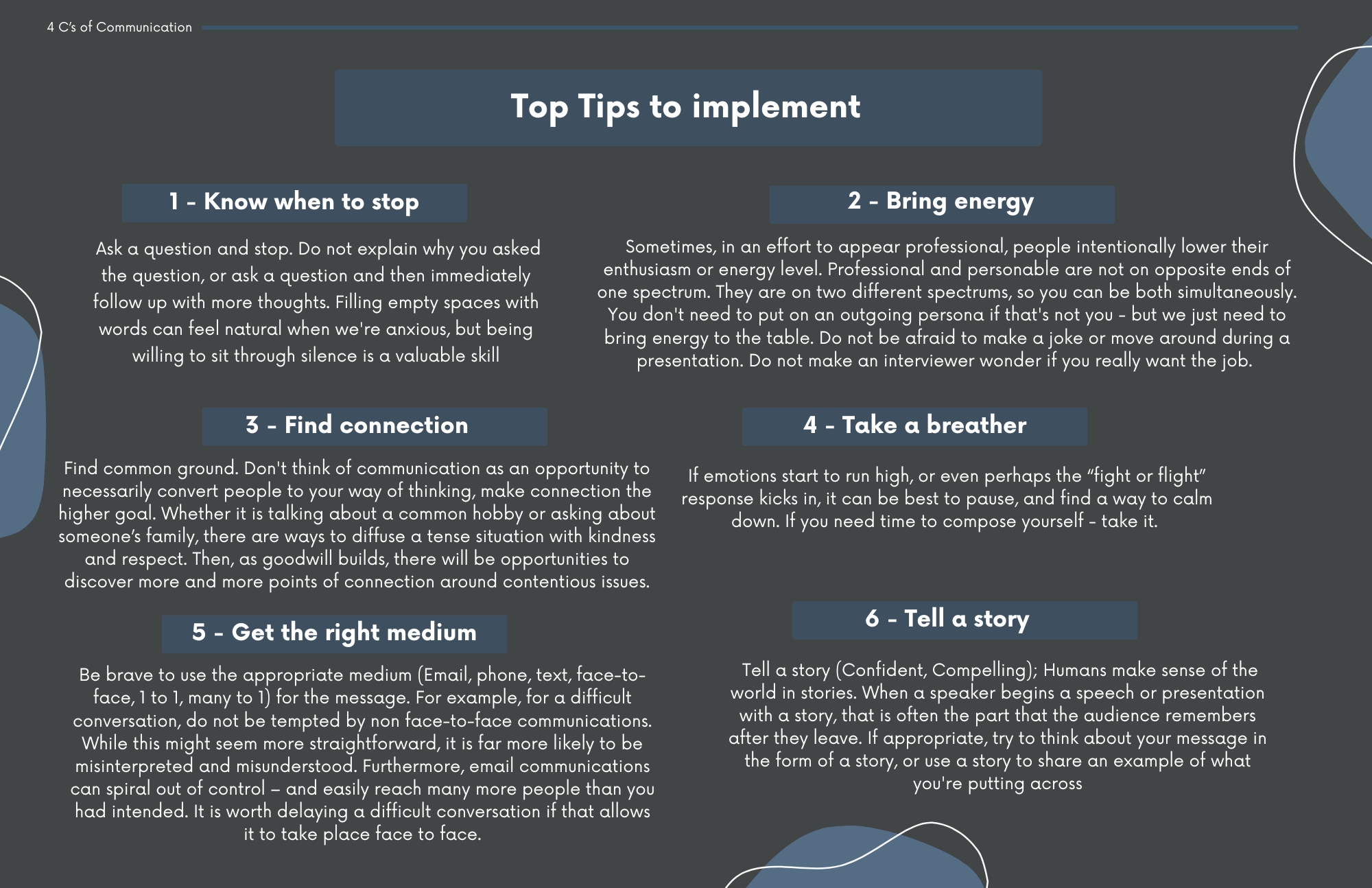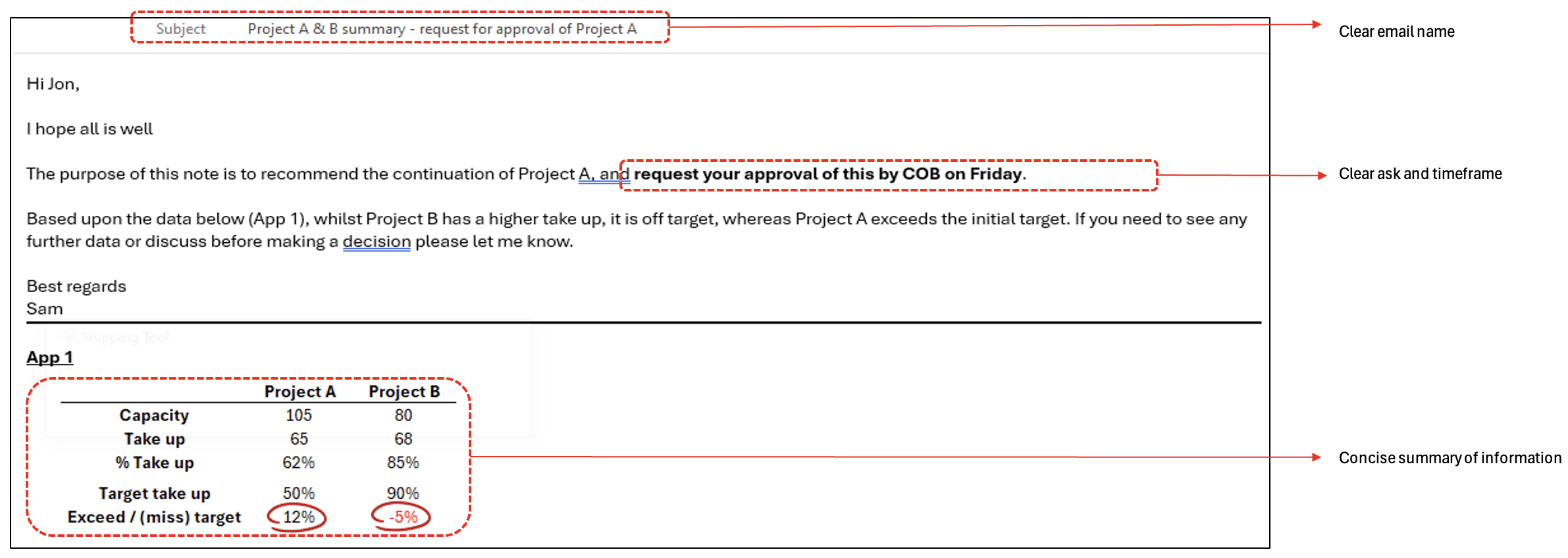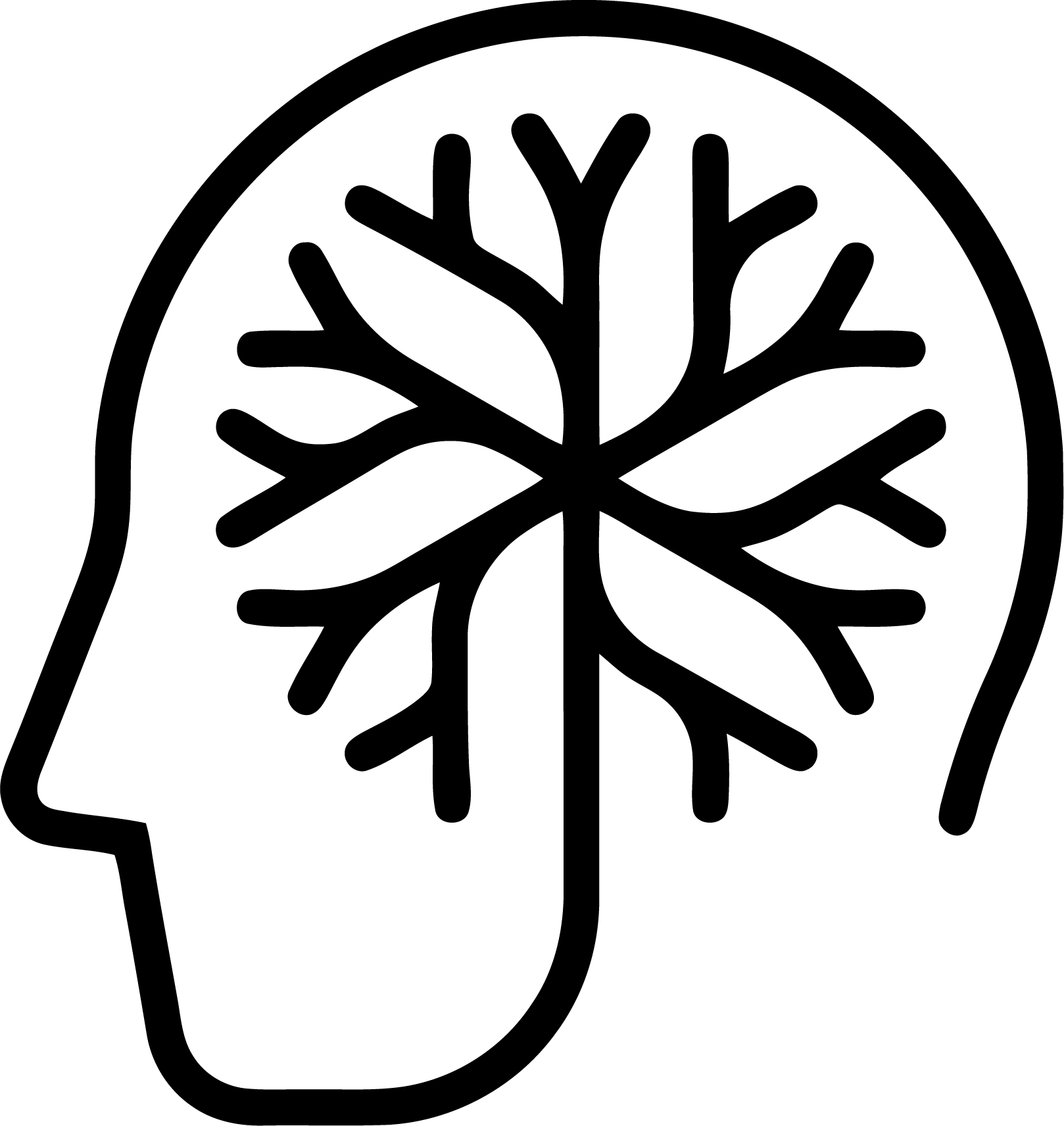What will you do?
You will learn more about the 4 C’s of Communication: Concise, Confident, Caring and Compelling through different mediums, like text, video and problem-solving scenarios.
What are the benefits?
You will be a better communicator, and ultimately, you are how you communicate. You give a first impression to someone often before they even meet you with the first email or phone call, so let’s ensure you are putting your best foot forwards and giving others the impression of you that you want to. Effective communication leads to better relationships and makes everything easier, in the personal and professional world. Ultimately, when stripped back, most if not all issues can be linked to communication issues.
Introduction
Being a confident and successful communicator is a skill to be learnt, not something you’re born with. This is great news! It is within our control to hone our skills and become master communicators – something which will serve you in all aspects of your life, both professional and personal.
Whilst listening is a fundamental part of communication, for the most part this will be covered under the separate element ‘Great Listener’, and the focus here will be on outward communication.
Following this course, you will be able to effectively apply the 4 C’s of communication – Concise, Confident, Compelling and Caring, across all forms of communication.
We are as only as good as we communicate – Vinh Giang
Key questions
- How effective are your various forms of communication?
- What’s the difference between passive communication and active communication?
- How can I best engage with my audience?
Within this module, we’re going to cover;
- The 4 C’s of Communication;
- Concise
- Confident
- Compelling
- Caring
- Verbal communication
- Written communication
- Other key communication factors;
- Presence
- Introverts
- Want to learn more?
Lets get into it!
The 4 C’s of Communication
The 4 C’s below underpin how to be a highly effective communicator. Here we explore what they mean, why their important, and how we go about implementing them, which is also addressed in the respective communication sections below.
Concise
Firstly, what does it mean to be concise? Being concise does not necessarily mean being brief. Concision is Precision. It is about focus rather than doing the bare bones. Conciseness involves delivering key messages without unnecessary details, keeping the audience engaged by providing only essential information.
A long communication may be concise if it is:
- Sufficient: Includes enough relevant information for the audience to act.
- Uncluttered: Free of unnecessary ideas, paragraphs, sentences, clauses, phrases and words are removed without sacrificing clarity or necessary details.
- Simple: Uses simple words and sentence structures.
Confident
The way we communicate with others, especially during emotionally intense situations, contributes to our overall level of confidence. With the right skills, and some practice, you could be communicating with your family members, frustrating colleague, or friends, with ease.
Being confident means using your body, voice and words effectively, as well as staying calm regardless of the situation, sticking to the facts and expressing your feelings with words rather than behaviours, such as raising voices, deflecting, over-explaining.
Being a confident communicator will make others more willing to listen to what we have to say. If someone appears confident – rightly or wrongly, they are perceived as more credible.
Compelling
‘The goal of communication is to inspire action’. We can inspire action by being compelling, in what we say, and how we say it.
We must consider several factors, including what energy we are bringing as a communicator. If we can’t deliver content with energy and enthusiasm, how can our audience receive it in that way? In considering your levels of energy, firstly consider your personality type. Are you the type of person who still has lots of energy remaining after 5 meetings in a day, or are you feeling depleted after 2? Based upon this, consider the timing of your communications – when will you get the best out of yourself? Secondly, sticking with the timing – think about whether its before lunch, after lunch, end of the day, or Friday at 4pm – how will this affect you, and how will this affect your audience? Sometimes we cant control the timing, but we can control the tone; ‘I know this meeting is standing between us and the weekend – if I can have your attention for 30 / 45 / 60 minutes, we can all get out of here promptly and well informed.’
To be compelling, we must know the audience. Understanding your audience is the foundation of effective communication – you could say knowing your audience is more important than knowing the material! Messages must be tailored to ensure that communication resonates and adds value. In addition to knowing them, we must connect with them, and get them involved. Communication is not a 1 way street, and to hear from one person for an entire session, however engaging they are, is dull. To connect with the audience we can ask questions, perform polls, ‘raise your hand if..’, set activities. This is true for 1-to-many communication, but also 1-to-1.
Caring
“Understanding is a two-way street” – tennis is a helpful analogy here, if we consider a friendly game whereby the aim of this tennis is to keep the ball in play, rather than to ‘win’. Those that communicate well hit the ball back and forth to each other’s forehand, rather than having you running all over the course to keep the game (communication) going, or even hitting the ball to the net on purpose to sabotage the game.
A caring communicator is someone who listens actively, speaks clearly, and shows interest and concern. They are also empathetic, friendly, and respectful. Again, we wont focus on listening here, but the other aspects. To speak clearly means to use language that is appropriate for the situation you’re in, and is appropriate for the listener. Perhaps English isn’t their first language, or perhaps they are older or younger than yourself – all these things might require a tweak to the language, tone and delivery used. Providing some level of eye contact with your counterpart / the audience will show interest in how they are receiving your message, and build trust. Using open body language will indicate to them that again, you’re interested how your message lands with them; whether it resonates or if they have any questions. This leans itself to also asking for feedback and questions, and taking that seriously, without offence.
Here are some top tips for you to implement:

Verbal Communication
Communication is a combination of;
Verbal; the words we use – our vocabulary, choice of words, pronunciation, syntax (structure), accent neutralisation
Vocal; how we sound – do we sound confident, our voice modulation, intonation, phrasing and pausing, inflection, stress patterns
Visual; how we look – do we look confident or are we a bundle of nerves?
Task One – Value Reflection
Take a few minutes to consider which of these elements you think is the most important, and why? Which is a strength of yours, or an area for development, how do you know this?
It would be reasonable to assume the split between these categories is approximately equal, right? Perhaps if we were a confident communicator, who was clear on our message, and delivered it perfectly, that would be the case. However, a study from the UCLA, states that Visual makes up 55% of our communication, Vocal amounts to 38%, and Verbal is 7%
This would mean that unless we communicate perfectly, over 90% of our communications will be interpreted by how we look and how we sound! The actual words used – our message – would be less than 10% of what people get when you communicate! If we have something important to say, and hopefully we do, this is critical information.
So, how do we improve our Verbal communication? A few themes and ideas are as follows;
- Conciseness: when it comes to word choice, less is more. If we can clearly organise our thoughts before we speak, we can say FAR more with far fewer words – distilling our message down to the utmost critical points. This will be appreciated by the audience who don’t have to sort through the ‘verbal clutter’.
- Non-verbal; Our facial expressions, gestures, and body language can, and often do, say more than our words – we must be mindful. Your nonverbal cues must, at all times, support your message. At best, conflicting verbal and nonverbal communication can cause confusion. At worst, it can undermine your message and your team’s confidence in you, your organization, and even in themselves.
- Tone; How you say something can be just as important as what you say. As with other nonverbal cues, your tone can add power and emphasis to your message, or it can undermine it entirely.
- Preparation; Know what you are going to say and how you are going to say before you begin any type of communication. Preparation also involves thinking about the entirety of the communication, from start to finish. Research the information you may need to support your message. Consider how you will respond to questions and criticisms. Try to anticipate the unexpected. For example:
- Before a performance review, prepare a list of concrete examples of your employee’s behaviour to support your evaluation.
- Before engaging in a salary or promotion negotiation, know exactly what you want. Be ready to discuss ranges and potential compromises; know what you are willing to accept and what you aren’t. And have on hand specific details to support your case, such as relevant salaries for your position and your location (but be sure that your research is based on publicly available information, not company gossip or anecdotal evidence).
Before entering into any conversation, brainstorm potential questions, requests for additional information or clarification, and disagreements so you are ready to address them calmly and clearly. Preparation is like a cheat code, provided we are willing to do it!
Task Two – Time to give it a go!
Record a 30 second video on yourself on your phone, introducing yourself – who you are, what you study or work on, and what your hopes for the future are. Do this upto 5 times and use the video you are happiest with.
Play back the video without looking at the screen, and just listen to the words you used, the pauses in your speech, your cadence and speed. Then, watch back the video without sound – notice what you are doing with your hands and where your eyes are drawn to. Notice your posture – and whether you look confident. Finally, watch the video with sound and notice any other observations. What are your overall impressions?
The purpose of this exercise is to firstly make you aware of your communication style, and secondly – to improve it! After completing this exercise, it should allow us to become aware of how many filler words we use (‘err/hmm/like/you know’), how quickly we speak, whether we make eye contact and whether we are appropriately gesticulating with our hands. The tweaks you make will carry over into your day to day and in person communication.
Written Communication
Emails
Emailing is a huge part of the professional world and increasingly a part of personal life too. Getting this form of communication right will help you not matter your area of work.
Task Three – Email Review
Read the email below and consider what is good and not so good about it. Then, pick out the key information and rewrite the email with the reader in mind, ie/ how can I make this as clear and concise as possible?

Click here to reveal a more effective email message.

Firstly, a clear email name. Unlike the first one (‘FW; Re; email trail..’), a thoughtful and appropriate email name has been used. It immediately lets the reader know the subject and the ask, which will enable them to know whether and when they need to open and read the email. Remember, many individuals are significantly pressed for time – we need to support them. Additionally, emails live for years, and people will often want to refer back to them. By providing an appropriate name, you give everyone (including yourself!) a fighting chance of finding the email again if required.
Secondly, the key information is front and centre of the email. Its not buried in a paragraph of text – its isolated and in bold – this is the ask. Superfluous information has to be removed. Take the burden off the reader to pick through the text – which they or may not be willing to do – concise and clear is key!
Third, and linked to the above, the key data has been extracted and presented in a table. There is no reason this needs to live in the body of the email – it becomes cluttered. If the reader is interested in the data, its there and easy to interpret. If they’re not interested, they can pass on it and still get the key message.
Other key communication factors
Presence
Presence is as difficult to define – you know it when you see it, but if you were asked to explain what it is, you would be hard pressed. People with a strong presence differ as it manifests itself in different ways. From the way someone enters a room to how they engage and inspire others, presence individual. When someone has “presence”, their communication is engaging, compelling and very impactful. In order to build your presence as a communicator, be;
- Authentic: Demonstrate enthusiasm, passion and caring, finding your passion and sharing it with others. Whether it is about a new idea, a product, a process, a change, the future or about the potential you see in others, share your enthusiasm. People are naturally drawn to “authentic” excitement.
- Connect: Truly linking with others. Being interested in others, and wanting to know about who they are, what drives them, what talents they have, what they are passionate about and what they value. Attention is what all people crave. It is what energises and motivates them. Simply being interested in someone and connecting with them based on what you find is incredibly powerful. The intention to connect leaves a lasting impression and is valued by everyone.
- Communicate: It is key to communicate effectively, concisely and with clarity. Being direct and transparent is very compelling, and genuinely trying to understand other people’s perspectives is critical to effective communication. Hearing and being heard. Franklin Covey said, “Seek first to understand, then be understood.” There is no better rule for being a great communicator.
Introverts
Somewhere between 30 to 50% of all people in the workplace are introverts. Introverts do their best thinking (and by extension, contributing) when they have the time and “space” to process information and develop a considered response. They’re more apt to wait until they feel they have something meaningful to say.
Final points for you
To re-iterate – being an excellent communicator is a skill to be learnt, not something you’re born with. It is within our control. What 1 thing will you commit to doing differently following this course?
Consider the incremental learning resources below for further development.
GIST – good ideas for starting things…
- Go into you sent items in email or some other messaging form, read over 3 at random. What could you have done better?
- Consider the last time you were in a miscommunication situation, how did you get there and what part did you play in that?
- Prep a 3 minute talk about a topic you are interested in, record yourself and analyse it back.
Want to learn more?
- Having difficult conversations relies on excellent communication, so we made a course about this here.
- Watch this ‘Demystifying Executive Presence’ video by Kshitij Sharma
- Watch this ‘The Power of introverts’ video by Susan Cain, she also has an awesome book called Quiet.
